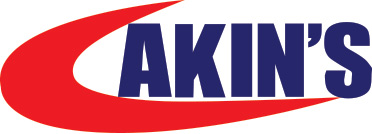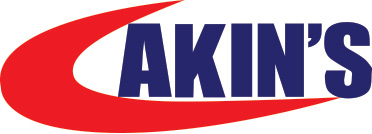
Cat Door Contractor
Add a review FollowOverview
-
Founded Date March 12, 1947
-
Sectors General Labour
-
Posted Jobs 0
-
Viewed 49
Company Description
This Most Common Cat Flap Installation Cost Debate Isn’t As Black And White As You Might Think

Decoding the Purr-plexing Price of Cat Flap Installation: A Comprehensive Guide
For cat owners, few things are as liberating for both feline and human as the modest cat flap. Giving your whiskered buddy the freedom to explore the great outdoors (or just the garden) on their own terms, while releasing you from the consistent task of doorman, appears like a purr-fect option. Nevertheless, before you visualize your cat with dignity gliding in and out at will, a sixty-four-thousand-dollar question develops: how much does cat flap installation actually cost?
The answer, like the character of a cat itself, is multifaceted and depends on a variety of aspects. It’s not an easy, one-size-fits-all price tag. Comprehending these influencing elements is crucial for budgeting and guaranteeing you get the ideal flap set up expertly and at a reasonable price. This short article will explore the intricacies of cat flap installation expenses, breaking down the various elements and providing assistance to help you navigate this necessary stage of pet-proofing your home.
Deciphering the Cost Factors: What Influences the Price Tag?
Several crucial components add to the final cost of cat flap installation. Let’s check out these in detail:
-
Type of Cat Flap: The elegance of your selected cat flap is a main motorist of cost. cat door for screen door flaps vary from standard, manual designs to technologically advanced, microchip-operated versions.
- Fundamental Cat Flaps: These are the easiest and most economical options. Often featuring a basic swinging door, they allow any cat (or small animal) entry. Installation for these is normally simple.
- Magnetic bespoke cat flap installation Flaps: These make use of a magnet on your cat’s collar to open the flap, preventing entry from strays or other neighbourhood felines. They are an action up in price however offer improved security. Installation is a little more complex due to the magnetic system.
- Microchip Cat Flaps: The most advanced type, microchip cat flaps read your cat’s existing microchip, granting access only to them. This offers exceptional security and control over who enters your home. They are the most pricey kind of flap and installation can be more detailed, sometimes needing a source of power if digitally run.
- Smart Cat Flaps: Extending beyond microchip innovation, wise flaps can connect to apps, providing functions like curfew settings, activity tracking, and remote locking. These are superior alternatives, reflecting in both the flap cost and potential installation complexities, particularly if they need electrical wiring or network setup.
-
Installation Surface Material: The material into which the 24/7 cat flap installer (https://www.repairmywindowsanddoors.co.uk) flap will be installed substantially affects the labor and tools required, and subsequently, the price.
- Wooden Doors: The most convenient material to work with, wooden doors are typically the most economical to set up a cat flap into. Standard carpentry tools are usually adequate.
- Glass Doors or Windows: Installing a cat flap in glass is significantly more intricate and expensive. It usually requires a specialist glazier to cut a hole in the glass, typically including ordering a customized glass panel with the pre-cut hole. Tempered or double-glazed glass contributes to the intricacy and cost.
- Brick or Masonry Walls: Installation in brick or masonry walls can be tough, needing specialized tools like drills with diamond-tipped core bits. It’s typically more time-consuming and labor-intensive, increasing the general cost.
- Metal Doors: Metal doors, specifically solid core varieties, can likewise provide challenges. Cutting through metal needs particular tools and competence, potentially increasing labor costs.
-
Installation Location and Accessibility: The area where you desire the cat flap set up, and how easily available it is, can impact the price.
- Ground Floor Doors: Generally the most convenient and most available places, resulting in basic installation costs.
- Upstairs Windows or Walls: Installation in greater areas, especially if needing ladders or scaffolding, can contribute to the labor cost due to increased intricacy and safety factors to consider.
- Difficult-to-Reach Areas: If the wanted location is behind furniture, in a tight corner, or has other availability restraints, it may increase the time and effort required for installation, therefore impacting the price.
-
Labor Costs: Whether you select DIY or professional installation, labor is an essential element.
- DIY Installation: While apparently complimentary in regards to direct labor costs, DIY installation requires your time, tools (which you may require to acquire or lease), and brings the threat of mistakes that might lead to further expenditure.
- Professional Installation: Hiring a handyman, carpenter, glazier, or specialist cat flap installer will incur labor costs. These rates vary based upon location, the professional’s know-how, and the intricacy of the task. Per hour rates or fixed quotes prevail. Specialists typically bring their own tools and competence, guaranteeing a correct and efficient installation.
-
Extra Features and Complexity: Beyond the basic flap type and installation product, extra features can influence costs.
- Tunnel Extensions: If installing through a thick wall or door, tunnel extensions may be needed to create a longer passage for your cat. These add to the material cost.
- Draft Excluders and Weather Seals: Higher quality flaps frequently come with much better draft exclusion and weather condition sealing functions, which might a little increase the flap price however can conserve on energy costs in the long run.
- Complex Wiring (for Smart Flaps): If your chosen clever flap needs electrical wiring to a power source or network connection, this will add to the intricacy and possibly the cost of professional installation.
Translating the Price Ranges: What to Expect to Pay
While precise costs vary geographically and depending upon particular project information, here are approximate cost varieties to give you a basic concept:
- Basic Cat Flap Installation (Wooden Door, DIY): Material cost for a basic flap can range from ₤ 15 – ₤ 40. Do it yourself installation ‘labor’ is your own effort and time.
- Basic Cat Flap Installation (Wooden Door, Professional): Including the flap and professional installation in a wooden door, you might anticipate to pay in between ₤ 60 – ₤ 150.
- Microchip Cat Flap Installation (Wooden Door, DIY): Microchip flaps themselves cost more, ranging from ₤ 50 – ₤ 150+. Do it yourself becomes more intricate due to possibly requiring to follow clear instructions and make sure right positioning for the chip reader.
- Microchip Cat Flap Installation (Wooden Door, Professional): Professional installation of a microchip flap in a wood door could range from ₤ 120 – ₤ 250+, consisting of the flap and labor.
- Cat Flap Installation in Glass (Professional): This is substantially more pricey. Expect to pay anywhere from ₤ 200 – ₤ 500+, possibly even more for custom glass panels or intricate double-glazing. This typically includes the cost of the specialist glazier, the new glass panel and the flap itself.
- Cat Flap Installation in Brick Wall (Professional): Brick wall setups are also costlier, varying from ₤ 150 – ₤ 400+, depending on wall density, flap type, and labor rates. This cost shows the specialized tools and extra time required.
Do it yourself vs. Professional Installation: Weighing the Pros and Cons
Deciding in between DIY and professional installation is a vital action. Here’s a breakdown to help you pick:
DIY Installation:
Pros:
- Cost Savings: Potentially conserves on labor expenses.
- Versatility: You can install at your own pace and schedule.
- Sense of Accomplishment: For some, DIY tasks are gratifying.
Cons:
- Time Commitment: Can be time-consuming, specifically if you’re not experienced.
- Tool Investment: May require to purchase or lease tools.
- Risk of Mistakes: Errors throughout installation can cause harm, improper functionality, or expensive repair work.
- Service warranty Issues: Incorrect installation may void the flap’s service warranty or home insurance ramifications.
- Safety Concerns: Working with power tools and glass requires care.
Professional Installation:
Pros:
- Expertise and Experience: Professionals have the abilities and understanding for appropriate installation.
- Efficiency: Installation is normally quicker and problem-free.
- Right Tools and Equipment: Professionals have the right tools for the task.
- Assurances and Warranties: Often offer warranties on their work, supplying comfort.
- Lowered Risk of Errors: Minimizes the chance of mistakes and guarantees proper flap functionality.
- Benefit: Saves you effort and time.
Cons:
- Higher Cost: Labor costs add to the general expense.
- Scheduling: You need to organize an ideal time for the professional to come.
Picking the Right Installer: Ensuring a Quality Job
If you go with professional installation, picking the right installer is important. Consider these tips:
- Get Multiple Quotes: Contact numerous handymen, carpenters, glaziers (for glass setups), or specialist cat flap installers for quotes. Compare prices and services offered.
- Check Reviews and Testimonials: Look for online reviews and testimonials to determine the installer’s credibility and quality of work.
- Inquire about Experience: Inquire about their experience particularly with cat flap setups, particularly if you have a specific enter mind or a tough installation surface.
- Verify Insurance and Licenses: Ensure they have suitable insurance coverage and licenses, supplying protection in case of mishaps or damages.
- Clarify Warranty/Guarantee: Ask about guarantees on their craftsmanship and the flap itself, if relevant.
- Request for References: Request referrals from previous customers to get direct feedback.
Tips to Potentially Reduce Installation Costs:
- Choose a Simpler Flap Type: If budget is a significant concern, a fundamental or magnetic flap is more cost effective than a microchip or clever option.
- Install in Wood if Possible: Wooden doors are the most cost-efficient installation surface area. If possible, choose a wood door over glass or brick.
- Get Multiple Quotes and Compare: Shop around for professional installation quotes to guarantee you’re getting a competitive price.
- Think About DIY for Simple Installations (If Confident): If you are useful and comfy with fundamental woodworking, a DIY installation of a basic flap in a wood door may be workable and minimize labor expenses.
The Long-Term Benefits Outweigh the Initial Cost
While the upfront cost of cat flap installation might appear like an expenditure, it’s important to consider the long-term benefits. A cat flap offers:
- Convenience for you: No more constant door duty.
- Freedom for your cat: Independent access to the outdoors or designated areas.
- Lowered Stress: Less meowing or scratching at doors for attention.
- Improved Home Hygiene: Can help lower litter box odors if your cat eliminates outdoors.
- Potentially Better Pet Behavior: Outdoor access can decrease boredom and damaging behaviours in some felines.
Conclusion: Investing in Feline Freedom
Cat flap installation costs are variable, influenced by flap type, installation surface area, labor, and other elements. By comprehending these factors and considering your DIY skills and budget, you can make a notified choice. While professional installation frequently comes with a greater price, it uses expertise and comfort. Ultimately, for many cat owners, the benefit, flexibility, and improved feline happiness offered by a cat flap make it a worthwhile financial investment, far exceeding the initial installation cost in the long run.
Regularly Asked Questions (FAQs) about Cat Flap Installation Costs
Q: What is the typical cost of cat flap installation?A: The typical cost is highly variable, varying from around ₤ 60 for a fundamental flap in a wooden door professionally set up, to upwards of ₤ 500+ for intricate installations in glass or with wise flaps.
Q: Is DIY cat flap installation advised?A: DIY is possible for basic flaps in wooden doors for those with good DIY abilities and tools. Nevertheless, for glass, brick, metal doors, or more complex flap types like microchip or smart flaps, professional installation is strongly advised.
Q: How much more expensive is it to set up a microchip cat flap compared to a standard one?A: Both the flap itself and the installation can be more expensive. Microchip flaps are pricier to acquire, and installation might require more care for proper sensing unit positioning, potentially increasing labor costs slightly.
Q: Are there any hidden costs related to cat flap installation?A: Potential concealed costs can consist of:* Tunnel extensions for thicker doors or walls.* Specialized tools required for DIY.* Repair costs if DIY installation is done improperly.* Replacement glass panels for glass door setups.* Additional electrical wiring for smart flaps.
Q: Can I set up a cat flap in a rental home?A: Generally, you’ll require to acquire permission from your proprietor before making any structural modifications, consisting of setting up a cat flap.
Q: How long does cat flap installation usually take?A: Installation time differs. A standard flap in a wood cat-friendly door installation might take a professional handyman 1-2 hours. More complicated installations in glass or brick, or for clever flaps, can take longer, potentially a number of hours or even require multiple visits if custom glass panels are needed.
Q: Do cat flap consultancy flap installers offer guarantees?A: Reputable installers typically offer guarantees on their workmanship. It’s important to clarify service warranty information before employing an installer. The cat flap itself will likewise typically come with a producer’s guarantee.
Lists Summary:
Factors Affecting Cat Flap Installation Cost (Unordered List):
- Type of Cat Flap (Basic, Magnetic, Microchip, Smart)
- Installation Surface Material (Wood, Glass, Brick, Metal)
- Installation Location and Accessibility
- Labor Costs (DIY vs. Professional)
- Additional Features and Complexity (Tunnel extensions, circuitry)
Pros and Cons of DIY Cat Flap Installation (Unordered List – Pros & & Cons sub-lists):
Pros:
- Cost Savings
- Versatility
- Sense of Accomplishment
Cons:
- Time Commitment
- Tool Investment
- Danger of Mistakes
- Guarantee Issues
- Safety Concerns
Benefits and drawbacks of Professional Cat Flap Installation (Unordered List – Pros & & Cons sub-lists):
Pros:
- Expertise and Experience
- Performance
- Proper Tools and Equipment
- Warranties and Warranties
- Minimized Risk of Errors
- Convenience
Cons:
- Higher Cost
- Scheduling
This post aims to offer a thorough understanding of cat flap installation costs, empowering readers to make informed choices and budget efficiently for this advantageous home enhancement for their feline buddies.


